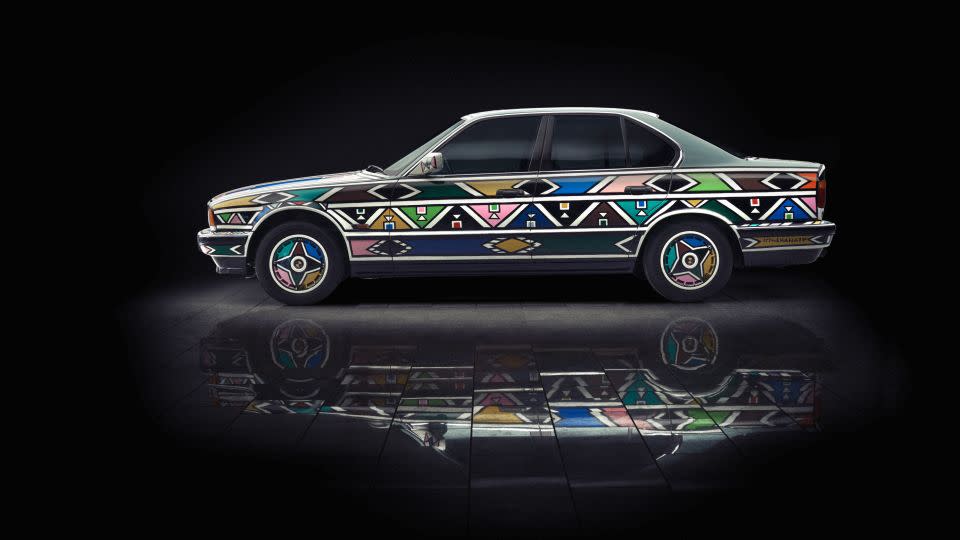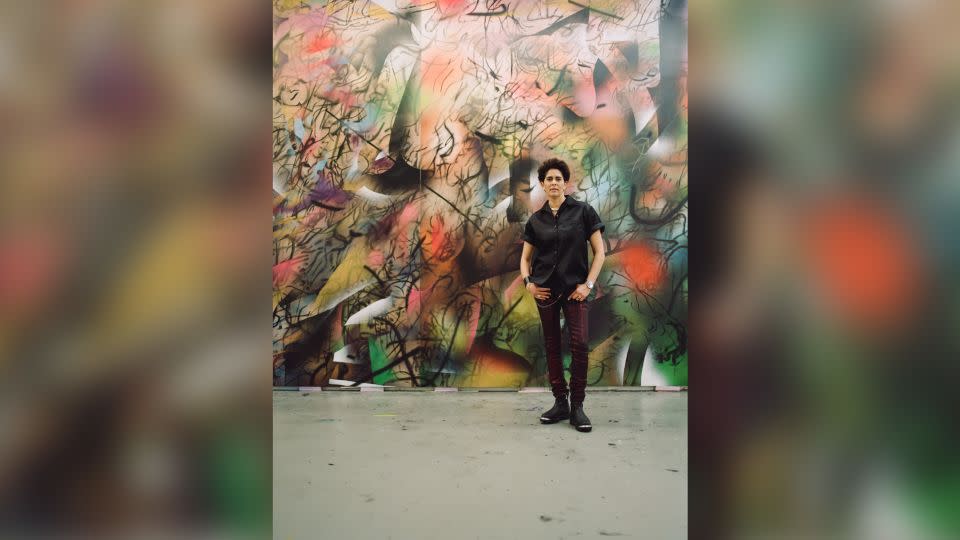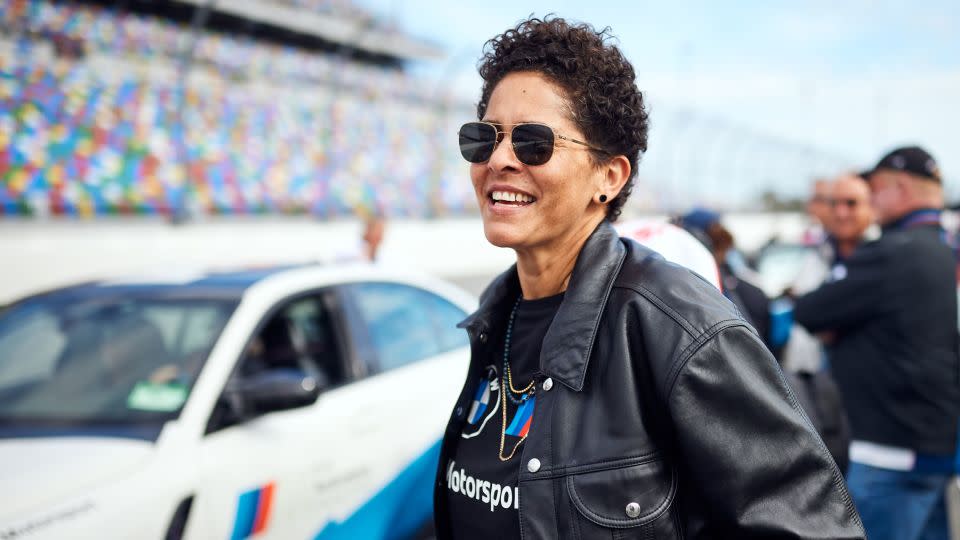BMW taps artist Julie Mehretu to paint its latest Art Car
- Oops!Something went wrong.Please try again later.
- Oops!Something went wrong.Please try again later.
- Oops!Something went wrong.Please try again later.
- Oops!Something went wrong.Please try again later.
- Oops!Something went wrong.Please try again later.
- Oops!Something went wrong.Please try again later.
- Oops!Something went wrong.Please try again later.
Over the past 50 years, artists including Andy Warhol, Jeff Koons, Jenny Holzer and Robert Rauschenberg have been chosen by the luxury car company to use a BMW as their canvas, each adorning one of the famous BMW Art Cars in their signature style.
Now, Ethiopian American artist Julie Mehretu, known for her work in abstract painting, has been chosen to create the company’s next Art Car. Her artwork, painted on a BMW M Hybrid V8, will be on the track at the 24 Hours of Le Mans race in June 2024.
The first BMW Art Car was painted in 1975 by the American sculptor Alexander Calder after French racing driver Hervé Poulain brought the idea to BMW. Poulain drove the Calder-painted BMW 3.0 CSL at Le Mans that year. In 1977, Roy Lichtenstein covered a BMW 320 Group 5 in the graphic stripes and dots he was renowned for; Warhol painted a BMW M1 in 1979 with textured, pastel brushstrokes.
The first woman to take on a BMW Art Car was South African artist Esther Mahlangu, who in 1991 painted a 525i sedan. In 1996, Holzer covered a BMW Le Mans race car in the words “Protect Me From What I Want,” among other provocative phrases.

Mehretu’s will be the 20th BMW Art Car. Her practice frequently draws inspiration from architecture and busy urban settings, featuring intricate juxtapositions of lines and shapes — inspired by technical drawings and building plans — and, sometimes, splashes of color or deep darkness. Her work has also addressed themes such as migration, colonialization and globalization.
Critics often highlight the sense of humanity apparent in her innovative, abstract works. There’s movement and complex emotion. Mehretu is best known for large-scale pieces, like an eighty-foot-long mural she created for the lobby of the Goldman Sachs building in Manhattan. It’s busy and bright with colored shapes overlaying dark straight lines; the red, yellow, blue and green forms appear to be actively shooting out across the huge wall. Other works, like “Mogama (A Painting in 4 Parts),” are grayer and more pensive but retain a soft, rippling sense of motion.
She is represented by the Marian Goodman Gallery, which describes her body of work on its website as “a dynamic visual articulation of contemporary experience, a depiction of social behavior and the psychogeography of space.”
“Mehretu’s practice in painting, drawing and printmaking equally assert the role of art to provoke thought and reflection, and express the contemporary condition of the individual and society,” the gallery added.

Mehretu was born in 1970 in Addis Ababa, Ethiopia to an Ethiopian father and an American mother. Seven years later, the family moved to the United States to escape a brutal civil war then-raging in the country. In 1997, she earned a Masters of Fine Arts from the Rhode Island School of Design; she is currently based in New York.
She has received widespread acclaim for her work, and prestigious awards including a MacArthur Fellowship in 2005 and, in 2015, a US Department of State Medal of Arts Award.
She was unanimously selected for this project by a jury of prominent gallery and museum directors.
Madeleine Grynsztejn, Pritzker Director at the Museum of Contemporary Art Chicago and a member of that jury, described Mehretu as the “perfect artist” to take on the BMW Art Car in a statement. “For years, Julie has painted speed and for a long time worked very successfully at scale,” Grynsztejn said. “To merge her work with the shape and form of a speeding vehicle is really an alignment of perfection.”
Mehretu spent time with the BMW racing team at 24 Hours of Daytona in Daytona Beach, Florida this past January, attending a racing event for the first time.

“The number of times the cars are going around for 24 hours, that kind of endurance… the immense number of people that are part of making that happen, the kind of collaborative work of it — all of that was so exhilarating,” Mehretu said at an event held at New York City’s Solomon R. Guggenheim Museum on Wednesday night.
The BMW M Hybrid V8, a plug-in hybrid, is a track-only racing car created to compete in the international endurance racing circuit. Designed and engineered in collaboration with the Italian race car manufacturer Dallara, it’s low and wide with an enormous rear wing and a large vertical rudder.
While she hasn’t decided, yet, exactly what she’s going to paint on the car, Mehretu said she was impressed with the speed and motion of the cars racing at Daytona and the way they blurred past at incredible speeds. The M Hybrid V8, specifically, will likely reach speeds over 200 miles per hour at Le Mans.
“It’s like the social fabric of our moment. It’s something that’s indiscernible, it’s unstable, it’s something that we can’t quite grasp,” she said, “and that blur and uncertainty is something that I really want to explore in this space.”
For more CNN news and newsletters create an account at CNN.com

